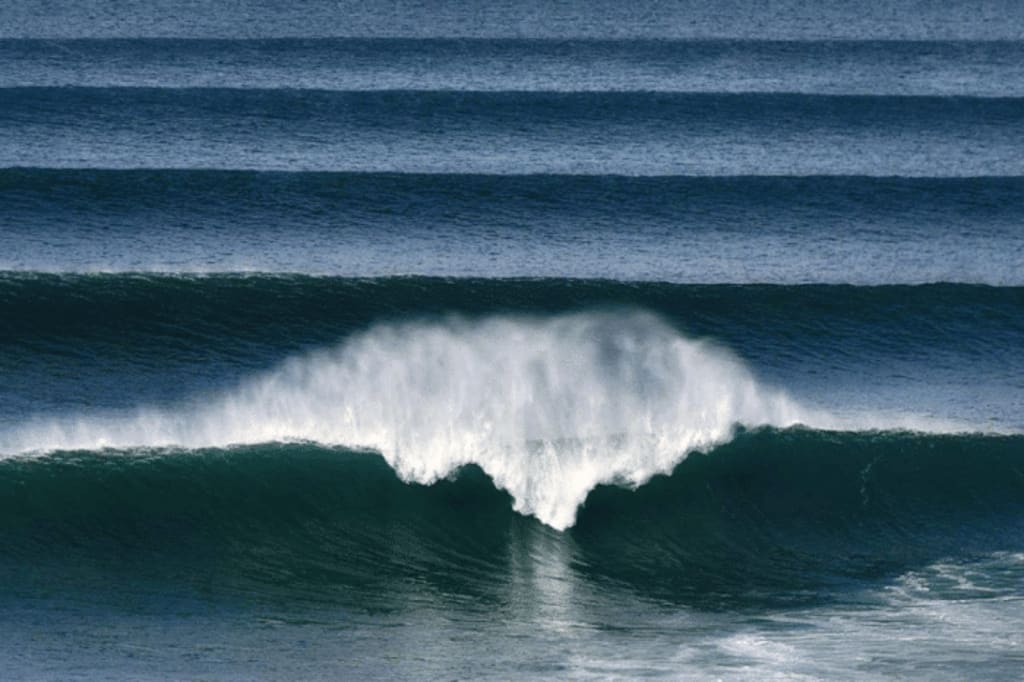Why does the sea rise and fall at high tide?
The law of seawater rise and fall

People who live by the sea know that seawater always goes in and out, and the sea surface has a rise and fall. At low tide, the seawater will gradually recede, the sea gradually backs down to reveal a large beach; at high tide, the seawater from the depths of the ocean will continue to surge up the coast, the waves roll, and the water level rises.
The ancient people will occur in the daytime seawater rise and fall phenomenon called "tide" (water plus the morning), occurring at night is called "tide" (water plus the evening), the two together called "tides". So, why does the sea water on earth have tides? Why is there a high tide when there is no wind and waves? After the tide, where does all the water go?
In ancient times, people have already found out the law of the occurrence of the tidal phenomenon. In the Eastern Han Dynasty, the thinker Wang Cong's book "on the balance", the tidal phenomenon and the moon's surplus and deficit have a relationship, the book wrote, "the rise of the tide also, with the moon bloom and decline, the size of the full loss is not the same". But in the 1780s, Newton discovered the famous law of gravity, and after the 18th century, Laplace established the theory of tidal dynamics, only to explain the tidal phenomenon to provide a theoretical basis, confirming that the tides are indeed mainly related to the gravitational force of the moon.
How are tides formed on Earth?
We all know that the Earth and the Moon are always in constant motion, making the relative positions of the Earth, Moon, and Sun change cyclically, and there will be mutual forces between them. Ocean tides are the periodic rise and fall of the sea surface caused by the gravitational force of the moon and the sun.
So, what is the tidal force? Let's talk about it specifically.
According to the law of gravity, the gravitational force between two celestial bodies is directly proportional to their masses and inversely proportional to the square of the distance. In other words, the greater the mass, the greater the gravitational force between the two, and the farther the distance, the smaller the gravitational force.
Under the gravitational force of the Moon, the seawater on the Earth will be attracted by the Moon, and the magnitude of the Moon's gravitational force will be different for each point on the Earth's surface at different distances from the Moon, and the direction of the gravitational force will point to the center of the Moon. The gravitational force is greater near the Moon and less at the far Moon.
Tides are affected not only by the gravitational force of the Moon but also by the inertial centrifugal force generated by the Earth's "rotation". In the Earth-Moon motion system, the Earth revolves around the common center of mass of the Earth and the Moon, and during this circular motion, inertial centrifugal forces are generated.
The combined force of the moon's gravitational force and the inertial centrifugal force at each point on the earth is the gravitational force that causes the sea to rise and fall.

The area of the Earth closest to the Moon is subject to a greater lunar gravitational force than the inertial centrifugal force, and the gravitational tide force points to the Moon, so the seawater rises and falls outward. And in the area with the back to the Moon and farthest from the Moon, the inertial centrifugal force on the seawater is greater than the gravitational force, and the gravitational tide force is directed away from the Moon, also bulging outward. And at the C and D of the Earth in the above figure, the direction of the gravitational tide force pointing to the center of the Earth squeezes the body of water inward. In this way, the seawater on the surface of the Earth takes on the shape of an ellipsoid, and the area of the bulge, with a high water level, shows a high tide. And the lowest water level in the area where the moon is perpendicular to the line connecting the center of the earth is known as the falling tide.
At the same time, the Sun and other celestial bodies also have a gravitational force on the Earth's oceans, but mainly the role of the Moon, followed by the Sun, the role of other celestial bodies is weak and can be ignored. And although the mass of the Sun is much larger than that of the Moon, it is so far away from the Earth that its gravitational force on the Earth is much smaller than that of the Moon. Scientific calculations show that the size of the tidal force generated by the Sun is only about 46% of that of the Moon. Therefore, the Moon is the main force causing the tides.
The tidal force caused by the difference in the position of the Sun and the Moon also varies. When the earth, the sun,n, and the moon are close to a straight line (the new moon and full moon, that is, the first and fifteenth day of the lunar calendar), the moon and the sun produce the tidal force superimposed on each other, at this time, the earth is subject to the maximum tidal force, can "push the wave", so that the tide rises to the highest, the formation of the tide.
China's Tangential River tide, known as the "world's first tide", it and the Amazon tide, and the Ganges River tide and known as the "world's three tides", the tide scene raging spectacular, every year a large number of tourists come to see this spectacle.
In the first and second lunar months, the moon and the sun are at 90° (relative to the earth), and the tidal force of the moon and the tidal force of the sun are in opposite directions, so the tidal force of the two will cancel each other out, that is, a small tide and the tide is the smallest of the month.
Where does the water go after the tide goes out?
When the tide is high, the waves roll and the seawater keeps surging; after the tide is out, this part of the seawater seems to have disappeared, without a trace, only revealing a large surface.
But in fact, the ebb tide of seawater did not disappear. To know the surface of the Earth's seawater is connected, the total amount of seawater remains the same. Only at the same time, there is a place where the tide is high, while other places are ebbing. The ebbing seawater that you thought had disappeared is gradually fluctuating to the area of high tide, forming a high tide. It's like shaking a basin of water, back and forth as it ebbs and rises, and so on.
Do tides only occur in seawater?
It is worth mentioning that since the sun and the moon attract tides to the whole earth, there are not only ocean tides, but also solid tides and atmospheric tides in the earth's lithosphere and atmosphere, except that seawater is fluid and has a more pronounced effect. Moreover, more than 70% of the earth's surface area is covered by the ocean, and the sun and moon's gravity act on all areas of the earth, these small effects accumulate to cause huge seawater movement.
And although the atmosphere is also flowing, but its density is much smaller than seawater, so the atmospheric tides are also far less significant than the sea tides, and can only be detected by measuring with extremely precise instruments. Atmospheric tides can be generated by air currents or storms.
The effect of celestial tidal force, also will make solid Earth deformation, called solid tides, with precision instruments can be observed in the crust also has a periodic rise and fall phenomenon, the land surface the rise and fall of up to 7 ~ 15cm. tidal force on the Earth's plate movement, the generation of earthquakes, and volcanic eruptions have a certain impact on the role. According to statistics, many large earthquakes often occur at night around the first and fifteenth day of the lunar calendar, this is because, around this time, the moon and the sun's gravitational force often reaches its highest value.
Conclusion
Nowadays, people have figured out the pattern of seawater rise and fall, and the future tidal rise and fall of most of the sea areas on earth can be accurately predicted within a certain period. Many countries have set up tidal power stations to generate electricity by using the tidal energy formed by the rising and falling of the sea.
The ocean has always been a mysterious existence, until now, only 5% of human exploration of the Earth's oceans, the deep sea many many mysteries are waiting to be explored!
About the Creator
Apostolakis
To make scientific, diligence is the mother of success






Comments
There are no comments for this story
Be the first to respond and start the conversation.